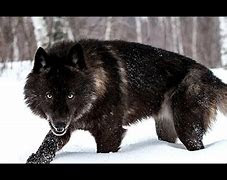Dear Reader,
Tesla's market capitalization is currently 342 billion USD.
I believe Tesla is worth no more than 70 billion USD or Tesla's stock needs to fall approximately 80% to reflect the company's true intrinsic long-term value.
Just look at the Price/Sales ratio of other luxury automobile manufacturers like Daimler or BMW. Yes, Ferrari's Price/Sales ratio is quite higher than the aforementioned German automobile producers, but Ferrari in previous quarters has recorded profit margins of circa 20%
Just think of it. At Price/Earnings Ratio of 950 if you buy the whole of Tesla and distribute all its yearly profit in dividends to yourself you would need 950 years to get your money back(!)
Tesla is a poster child for this market. When the stock market crash comes, it will be especially hard for technology stocks as Nasdaq Composite could fall 70%.
Some of the larger and smaller technology companies, though, would remain as they have created amazing products that add a lot value to both consumers and corporations.
Disclaimer: The blogposts and comments on this blog and posts on social networks(Twitter, LinkedIn, Facebook etc.) are not investment recommendation, are provided solely for informational purposes, and do not constitute an offer or solicitation to buy or sell any securities. The opinions expressed on the blog are Petar Posledovich's. Petar Posledovich does not guarantee the accuracy of the information presented on this blog and social networks. The information presented is "as is".
Petar Vladimirov Posledovich is not liable for any investment losses incurred by reading and interpreting blogposts on this blog and posts on social networks.
Conflicts of interest: I may possess some of the securities, currencies or their derivatives mentioned in the blogpost and posts on social networks(Twitter, LinkedIn etc.)!
Respectfully yours,
Petar Posledovich


1 comment:
I fully agree. A great idea does not mean a great investment and those PE ratios are high even for growth stocks.
I think the biggest challenge for investors is 'thinking outside the box'.
I think most investors think of volatility in terms of put and call options, in terms of straddle and strangle or in terms of currency fluctuations or going long US treasury bonds or gold.
The greatest challenge for investors is to find out how to protect their portfolio and make it anti-fragile with real investments.
And it is always the case that in real crises there is the flight to food, food becomes essential.
So if we look at the food price index measured in US dollars, it has a big volatility,
but in the long term it is more than 100% for 13 years (2007-2020). It is 6% on an annual basis.
Well, that means that if we measure inflation by food prices only it is 6%.
So this brings us to one important question. What if people's expectations change?
What if they suddenly start pricing in this inflation?
We could easily go higher.
And then if we think - what is actually farmland - it can be viewed as a bond with a food coupon attached to it. Some say - a gold with a dividend yield.
So if suddenly food becomes scarce as it has started to appear in some areas of world, where do we think the price of farmland would go?
I think investors neglect the pure fact that if the crisis deepens, there will be food shortages and the demand for food would rise.
That is why I am going long farmland. Yes, it takes some efforts, but if we think it over again.
What if central banks cannot save the system this time? Who is going to cover our gain on the CDS, our gain on the put on the stock market? What if the counterparty does not have the money to pay us off?
Do we think we will be so clever to sell just before the market closes for several months?
How would we provide for the family if we do not have some farmland, gold and silver?
Tensions are everywhere today.
I think there is this misconception that jobs are safe. No, they are not. Jobs are actually obsolete and it is because of the robots.
The idea of universal basic income becomes more and more acceptable.
Why not sell freedom for some...food? Food is freedom. Farmland is freedom.
Post a Comment